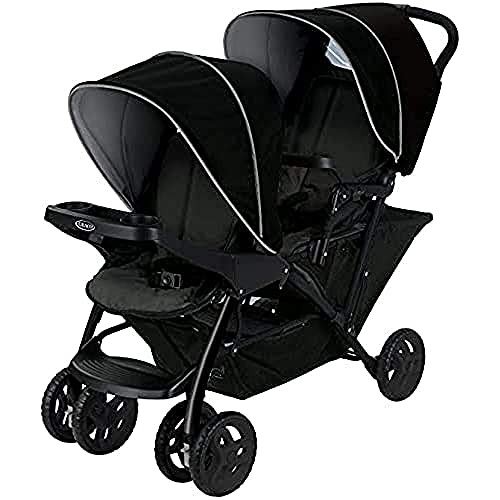Understanding Prams and Pushchairs: A Comprehensive Guide
When getting in the world of being a parent, one of the most important choices to make includes selecting the ideal equipment for carrying a newborn or young child. Among the top contenders for this purpose are prams and pushchairs. Pram Vs Pushchair serve the fundamental function of assisting parents and caregivers carry their children conveniently, but they have unique features, advantages, and utilize cases that set them apart. This post aims to check out prams and pushchairs in-depth, assisting prospective purchasers through their essential distinctions, benefits, and functions, and dealing with frequently asked questions.
What is a Pram?
A pram, short for "perambulator," is a kind of automobile created specifically for infants. It features a completely reclining seat or bassinet, so a baby can lie flat while being transferred. This is especially essential for newborns whose spines are still establishing. Prams frequently have larger wheels, providing a smoother ride on numerous terrains.
Key Features of Prams:
- Fully Reclining Seat: Allowing infants to lie flat.
- Bassinet Design: Some models include a removable bassinet.
- Large Interior: Adequate area for the kid to move comfortably.
- Robust Frame: Designed to be more stable, preferably matched for city and backwoods.
Advantages of Prams:
- Comfort: Provide a cozy space for the baby.
- Adaptability: Many can be transformed to a pushchair as the child grows.
- Stability: Larger wheels and frames offer higher stability, especially on unequal surface.
What is a Pushchair?
A pushchair is a lightweight option frequently used for young children. Unlike prams, pushchairs normally feature a seat that can sit upright and may not provide a completely reclining option, making them ideal for older babies who can support their heads and necks. Many modern pushchairs featured various features tailored towards convenience for the moms and dad and comfort for the kid.
Key Features of Pushchairs:
- Multi-position Seats: Can deal with sitting upright or reclining options.
- Lightweight Design: Easier to carry and steer.
- Foldable Framework: Often fold up compactly for simple storage and transportation.
- Larger Storage Baskets: Convenient for carrying baby essentials.
Benefits of Pushchairs:
- Lightweight and Portability: Easy to carry and save.
- Steerability: Smaller wheels permit sharper turns.
- Accessibility: Easier access to older toddlers.
Secret Differences Between Prams and Pushchairs
| Function | Pram | Pushchair |
|---|---|---|
| Age Recommendation | Newborn to 6 months | 6 months to 4 years |
| Seat Position | Completely reclined | Multi-position |
| Weight | Heavier | Lightweight |
| Surface Usage | Ideal for all surfaces | Best for city/urban environments |
| Size | Larger, bulkier | Compact, simple to fold |
Picking the Right Option for Your Needs
The choice to select between a pram and a pushchair mainly depends upon your specific lifestyle and your kid's age. Here is a breakdown of factors to consider to help limit the alternatives:
Considerations for Prams:
- If you reside in a rural area with rough terrain, a strong pram may be better.
- If you plan to use it for long walks or outings, the convenience of a pram can be helpful.
- Ideal for parents who want a model that will easily support a newborn.
Considerations for Pushchairs:
- If you need something lightweight for city living or public transport, a pushchair might be a better fit.
- For parents who desire a flexible option for toddlers with numerous position settings.
- If storage space is a concern, the compact nature of pushchairs provides a service.
Common FAQs
1. Can you use a pushchair for a newborn?
While lots of contemporary pushchairs provide reclining seats that can be utilized for newborns, it's generally suggested to use a pram or a pushchair with a bassinet alternative for sufficient support.
2. For how long can you utilize a pram or a pushchair?
Prams are normally used for infants up to six months, while pushchairs can be suitable for kids up to 4 years or more, depending on the model.
3. Are prams more pricey than pushchairs?
Prams are typically pricier due to their style, flexibility, and materials. However, costs can differ commonly depending upon brand, features, and age suggestions.
4. Is it necessary to have both a pram and a pushchair?
Not always. Numerous parents choose a 2-in-1 system that integrates both functions, allowing them to adjust as their kid grows.
5. What should I prioritize in selecting one?
Prioritize safety functions, comfort, weight, size, and how well it fits into your way of life. Read evaluations, and test drive different designs when possible.
Choosing between a pram and a pushchair is an essential decision for brand-new parents and caretakers. Both choices have unique functions that accommodate different age varieties and lifestyles. By understanding these important differences, benefits, and suggestions, moms and dads can make a more informed choice that meets their family's needs. Whether embarking on a leisurely stroll in the park or browsing the pressure of city streets, the right pram or pushchair can improve the experience, offering security and comfort for both the child and the caregiver.

